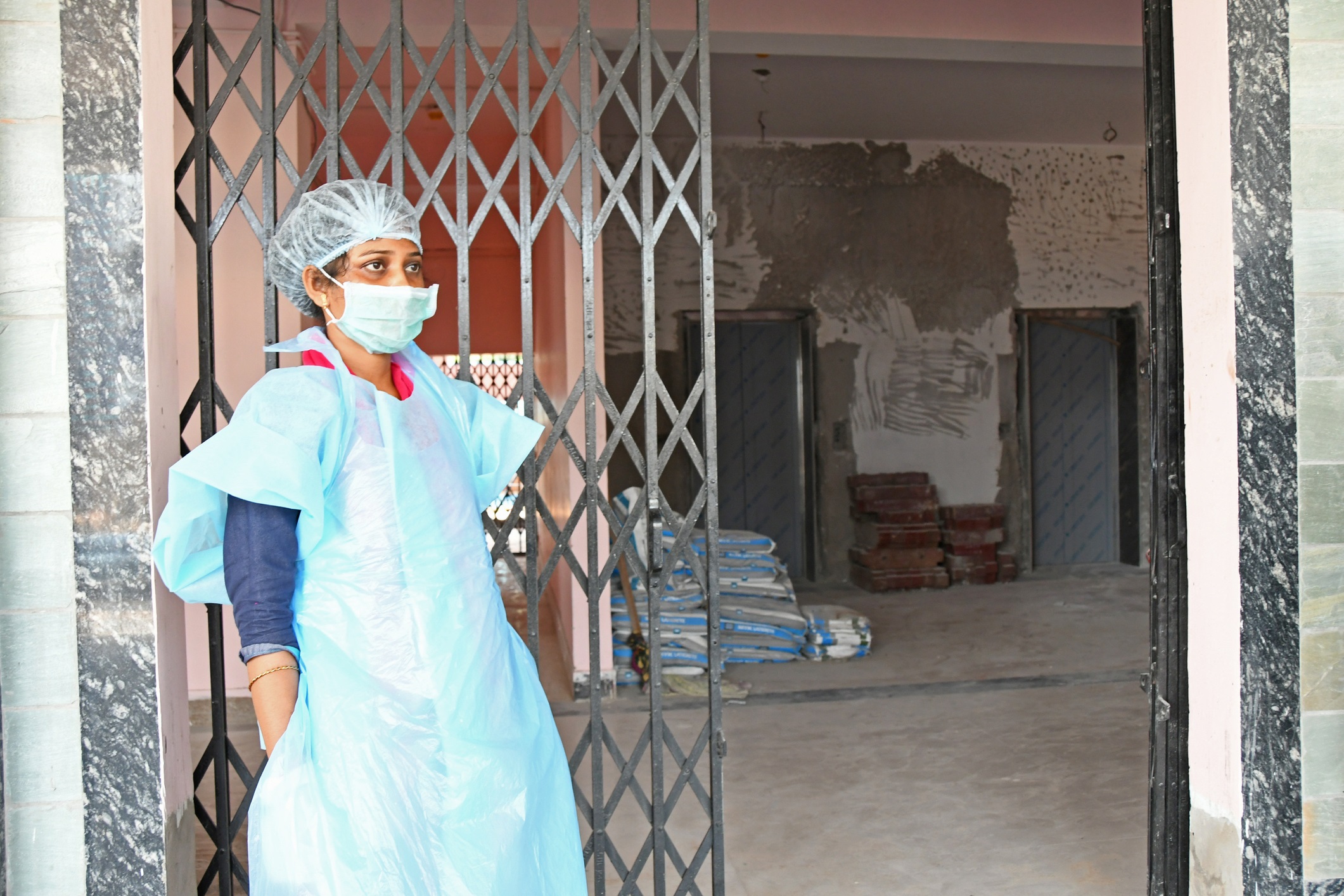Given its capacity to spread through the global human population, COVID-19 has been identified as an ‘unprecedented crisis’. It is, however, a surprise that the world has been blindsided by the novel coronavirus, considering the collection of past experience with epidemics, medical knowledge on infectious disease pathology, global and international risk mitigation and disaster response strategies.
At about 1% of GDP, the Indian government has one of the lowest public health expenditures in the world. This compels 64.6% of the population to spend out-of-pocket on medical needs. The weak public health systems push people from all classes into the unorganized, costly and profit-driven private health sector. The number of ICU beds, doctors, medical equipment available were already “abysmally low” pre-COVID-19 and are now vastly inadequate to care for the millions of severe cases that will reach public hospitals in the coming months. The country was already battling the silent epidemic of tuberculosis, which feeds off swathes of the population, while diseases such as malaria, dengue, filariasis, Japanese encephalitis, chikungunya and Kala-Azar take turns across seasons to wreak havoc among scores of people. Those who survive these physical onslaughts, are left to battle financial instability and compromised health within an endless cycle of poverty and disease.
India receives considerable technical expertise and financial commitments from external sources, but this can lead to health agendas being dictated from the outside; and translate into silos of health programming instead of comprehensive action.
The recently announced relief package worth INR 1.70 lakh crore (roughly USD 23 billion) under Pradhan Mantri Garib Kalyan Yojana (PMGKY) will likely necessitate a diversion of fiscal and human resources from scarcely funded health programmes, threatening the lives of millions. Thousands of women in India go into labour daily and with curfew-like restrictions and lack of adequate public transport, they could face severe obstetric complications. In Sierra Leone, changes in the delivery of essential health services to manage the Ebola outbreak led to a fall in utilization of reproductive services. Between December 2014 and May 2015, this resulted in between 3600 and 4900 additional maternal, neonatal deaths and stillbirths, equal to the number of deaths directly attributed to Ebola.
The epidemic of mobility
Pre-coronavirus, epidemics were commonly understood as “springing up” in remote corners among deprived or “susceptible” populations. COVID-19 is a labyrinth that stretches across past and present, social and biological and defies a start and end. It refuses to fit a single geography, population or explanation. It is decimating jobs, suspending education, modifying social contact and creating deep-seated trauma . Another way to consider it is in terms of ‘syndemics’[i], moving from individual behaviours to moral, political, economic and social configurations in addition to epidemiological ones.
Global capitalism relies on transnational value chains and treats geographic pockets of cheap labour as factories of the world. Manufacturers routinely procure raw materials and parts via lean inventories based on predictable steady supplies. Given this scenario, rapid diffusion of COVID-19 should not have come as a surprise to anyone. The stringent containment and lock down measures are a continuation, and not disruption, of this status-quo. In the Indian context, these measures neglect the vulnerabilities of a mobile workforce and risk the lives of millions. Social distancing and working from home are privileges of immobility. Only a minuscule, fortunate minority can afford to stock-up on goods and practice the luxury of frequent hand-washing. How does one contain the economically precarious housekeepers, office helpers and cleaners? What about the exponential pressures on farmers and the vast informal sector? Countless sacked daily-wage earners are fighting for one meal a day. In massive numbers, they are walking 500-600 km back home from cities that have abandoned them. Starvation will kill them faster than COVID-19.
Framing COVID-19 as a crisis exacerbates social hierarchies.[ii] There are no “true” accounts of coronavirus, only competing claims, with some gaining more visibility and legitimacy than others. As an ‘exceptional’ situation, it can galvanize considerable technical intervention and resources, and make visible improvements in the short run. However, it will prevent engagement with the structural dynamics as a matter of long-term salience. A highly anticipated solution is the development of a vaccine against the virus. While a vaccine is urgently needed, it can only provide immunity against COVID-19. It cannot substitute robust health systems. It cannot solve informal employment, homelessness, densely packed neighbourhoods, lack of running water, medicine and food – each of which are problems with known solutions and yet continue to cause widespread morbidity and mortality.
To see the pandemic as socio-economically constructed is to lay to rest its ex-nihilo conceptualization - coronavirus existed across several levels simultaneously and was simply waiting in the wings. It is making the most of our collective tendency to neglect the fact that breaking the chain of exposure, infection, negative outcomes is as much about creating strong health system and centering peoples’ vulnerabilities as it is about figuring disease pathways and controlling risky behaviours.
Vyoma Dhar Sharma is a DPhil candidate in International Development in Oxford
[i] Herring, A., & Swedlund, A. C. (2010). Plagues and Epidemics in Anthropological Perspective. In A. Herring, & A. C. Swedlund, Plagues and Epidemics: Infected Spaces Past and Present (pp. 1-20). Bloomsbury Academic.
[ii] Enria, L. (2017). What Crisis Produces: Dangerous Bodies, Ebola Heroes and Resistance in Sierra Leone. Bath: Bath Papers in International Development and Well-Being.
